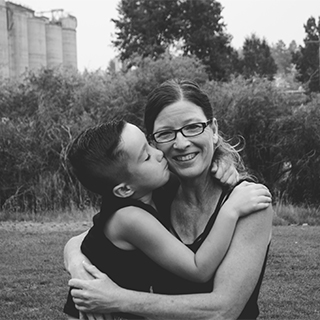My Perspective: Planning for Crisis – Benefits of a Family Safety Plan

By Elizabeth Cummings:
Elizabeth is a middle school special education teacher and mother of two boys from Kalispell, Montana. She serves on the Rural Institute Consumer Advisory Council and advocates for individuals with disabilities and their families.
“It’s time to talk about crisis.”
This phrase had been running through my mind for some time now. I’d push it away, and there it was again unexpectedly while standing in the grocery store or picking up a prescription. I knew it was time to talk about crisis. But how?
Crisis. It’s a simple word, but not an easy topic. Defined as “a state of serious destabilization with the potential to cause harm or injury,” crisis can be a part of many families’ experiences, including those with a loved one with special needs. It can be hard to talk about, and too often a source of shame or stigma. Like many other families, mine has experienced crisis, so I understand the challenges as well as the need to discuss the subject. The hard part is knowing where to start.
My son with a complex disability is a joy. Charlie is full of life, energy, enthusiasm, and love. He has met a plethora of goals, many of which I wasn’t sure would ever be attainable. For all of the challenges that came with a genetic disorder and autism, a behavioral crisis was never part of our experience. And then Charlie hit puberty.
I believed I was prepared for the abrupt changes that can come with adolescence from my role as a middle school special education teacher. I had observed the intensity of the hormone-charged teenage years in the classroom and the effect these changes could have on behavior and regulation. I considered myself fairly experienced with crisis, having navigated its cycle hands-on with others and taken a number of trainings. It was an emotional blow when the dysregulation and aggression that can define crisis presented itself in our home. Where did this come from, I asked myself, increasingly concerned as my once small and lanky boy now stood much taller than me. Usually the only adult in our home, I worried how I would control the situation. Too often, I wondered what I was doing wrong.
These thoughts didn’t linger, gratefully. Relationships with other parents and my experience in the school setting helped me quickly reach out to the medical community for help. Limited in his language but experiencing rapid growth and an increased desire for independence, I came to understand that behavior was speaking loudly for Charlie. I was advised to make a family safety plan, and having these steps to follow provided structure and order to experiences that could feel out of control. We enlisted the help of a psychologist and were very fortunate to find one trained in working with individuals with special needs. She also provided family counseling and training to support Charlie.
With these supports, our family has made great progress. This is not to say the process has been without challenges. It’s hard to ask for help. As in many places, our community lacks services for individuals with special needs experiencing a behavioral or mental health crisis. Professionals experienced at working with individuals with special needs are hard to find, especially in rural areas.
What I’ve learned is that when a mental health crisis gets destigmatized, families can address the hardest challenges. This has been made easier with a strong support system and practitioners willing to learn alongside with us. By listening, learning, and talking about this complex subject, we can improve how we respond for our loved ones together.
A Family Safety Plan is a tool developed in collaboration with your loved one. It serves as an in-the-moment guide for how to best divert a crisis situation.
Tips For Creating a Proactive Safety Plan
- Consider past triggers and strategies that have been helpful in diffusing them.
- Keep language clear and simple.
- Think about and address the conditions under which you need to enlist more help.
- Consider plans for meeting the needs of siblings.
- Share copies with your support system and first responders as needed.
- Revisit the document. A crisis plan will change and evolve with time.
Consider including the following in a Safety Plan:
- Medication details and prescribing physicians.
- Support individuals and their contact information.
- Information needed to address sibling needs.
To learn more about safety plans, search the following terms:
Pacer Center: Crisis Management Plan
Before a Mental Health Crisis Hits: Creating a Family Safety Plan
Crisis Planning Tools for Families: Safety Plan Companion Guide for Providers.
Disclaimer:
This publication was developed under Grant H84MC32752 from the Health Resources and Services Administration (HRSA), Family to Family Health Information Center, $96,750. Views and opinions expressed in this article are the author’s and do not necessarily reflect the official policy or position of the Montana Family to Family Health Information Center, the Rural Institute for Inclusive Communities, the University of Montana, or HRSA.

